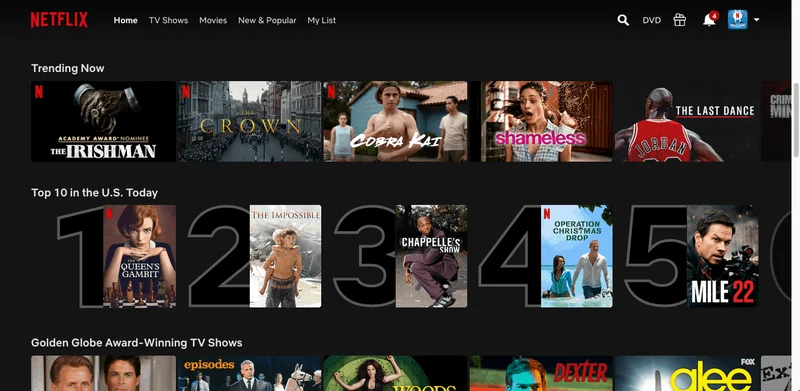Netflix's 10-for-1 Stock Split: What We Know and Why It Probably Doesn't Matter
So, Netflix finally did it. They announced the big ten-for-one stock split, and the market, predictable as ever, gave a little golf clap in after-hours trading. The `netflix stock split 2025` is officially on the books, with a record date of November 10 and split-adjusted trading starting November 17. The press releases are out, confirming that Netflix announces a 10-for-1 stock split, and the talking heads are chirping, and everyone’s acting like this is some revolutionary event.
Give me a break.
Let's be brutally honest about what a stock split is. It's financial cosmetic surgery. It’s the corporate equivalent of a balding man getting hair plugs—it might change the immediate appearance, but it doesn’t change the underlying reality of what’s going on. Netflix isn’t suddenly ten times more valuable. Your slice of the pie isn’t any bigger. They just took your one big slice and cut it into ten tiny, bite-sized pieces, hoping you’ll feel fuller.
And the reason they gave? Oh, it’s a classic. The official line is that Netflix Approves 10-for-1 Stock Split to Expand Employee Access. I had to read that twice to make sure it wasn't a parody.
The "For the Employees" Excuse is an Insult
I can just picture the meeting. Some VP in a ridiculously expensive, yet somehow bland, quarter-zip sweater stands in front of a whiteboard in a sterile Los Gatos conference room. "Okay team," he says, "the stock's over a grand. Retail investors are getting spooked. How do we spin a split so we don't look like we're just trying to pump the price?" And some bright-eyed marketing intern, fresh out of a business ethics class they promptly forgot, raises their hand. "Let's say it's for the employees! It sounds... noble."
It's a bad excuse. No, "bad" doesn't cover it—this is a five-alarm dumpster fire of corporate doublespeak. In an age where literally every major brokerage offers fractional shares, the idea that a four-figure stock price is a barrier to entry for anyone, let alone the tech-savvy employees of Netflix, is patently absurd. You can buy $5 worth of Netflix stock right now if you want to. Your barista probably owns 0.004 shares of it.

So if it's not really about access, what is it about? Why now? If management was genuinely concerned about their employees struggling to afford shares, wouldn't they have done this when the stock hit $700? Or $800? Why wait until it's comfortably over $1,000? Could it be that this has absolutely nothing to do with employee welfare and everything to do with market psychology? Offcourse it is.
This whole narrative feels like a solution in search of a problem. It’s a beautifully crafted piece of PR designed to make a purely mechanical financial maneuver sound like a benevolent act of corporate citizenship. And we're all just supposed to nod along...
The Real Game: Chasing Retail Dollars
Let’s call this what it is: a psychological trick. A stock priced at $1,089 feels expensive, exclusive, and intimidating to the average person scrolling through Robinhood. It’s a "boomer stock." But a stock priced at $109? That feels cheap. It feels accessible. It feels like something you can jump in on. The math doesn't change—the company's market cap is identical—but the feeling does. And in a market driven by memes and sentiment, feelings matter.
Netflix knows this. They saw what happened with Nvidia and Chipotle. A split brings a flood of headlines, renewed interest from smaller investors, and often, a short-term sugar rush for the stock price. It's a way to change the narrative, especially after a recent post-earnings dip where the market got fussy about a one-time tax bill in Brazil, completely ignoring the solid revenue growth and killer ad-tier performance. They needed a new headline, and "Netflix Slashes Stock Price!" is a hell of a lot sexier than "Netflix Pays Brazilian Taxes."
This isn't an investment strategy; it's a marketing campaign. It's like a grocery store putting a giant "SALE" sign on a can of beans but not actually changing the price. The sign itself is what draws your eye. The split is the sign. Netflix is betting that a new, lower price tag will lure in a new class of investors who make decisions based on sticker price rather than, you know, value.
And maybe they're right. Maybe in this clown-show market, that's all it takes. But does this move signal confidence in their long-term growth in streaming and advertising, or does it signal a need to play short-term games to keep Wall Street happy? When you have to resort to parlor tricks, what does that say about the magic of your core business?
It's Just Math and Marketing, Folks
At the end of the day, the `netflix stock split news` changes absolutely nothing fundamental about the company. Netflix is still the king of streaming, fighting off a legion of competitors. It's still trying to figure out the long-term puzzle of advertising and gaming. It still has to produce content that millions of people want to watch, month after month. A 10-for-1 split doesn't write the next season of Stranger Things or sign a deal for a new blockbuster. It's just noise. It’s a slick, well-packaged piece of financial theater designed to manipulate perception. Don't mistake the sizzle for the steak.
Tags: netflix stock split
Akash Network Ditching Cosmos: Why They're Bailing and What's Next for the AKT Price
Next PostThe Fall of FTX: What Really Happened and Why It’s a Turning Point for Tech
Related Articles
